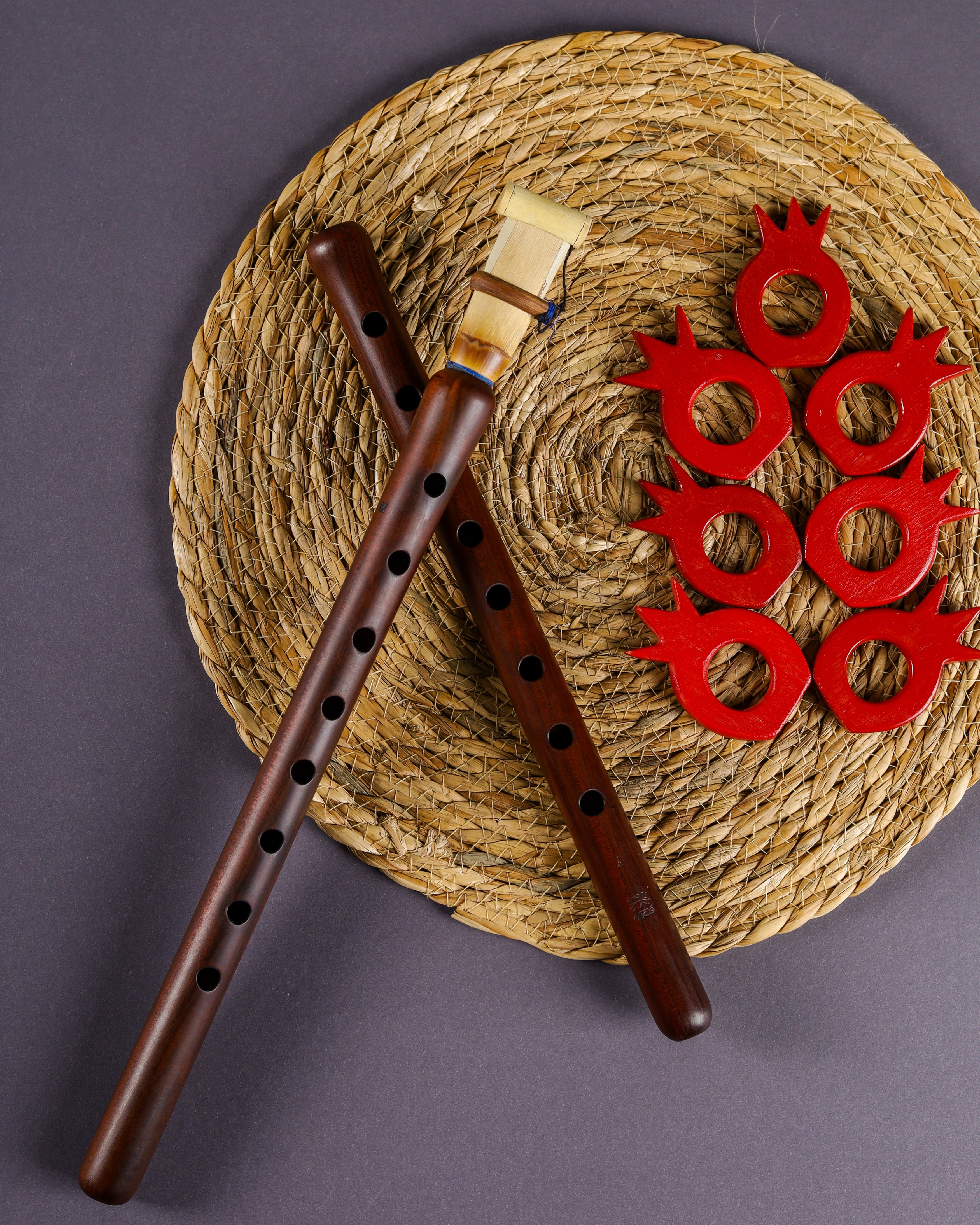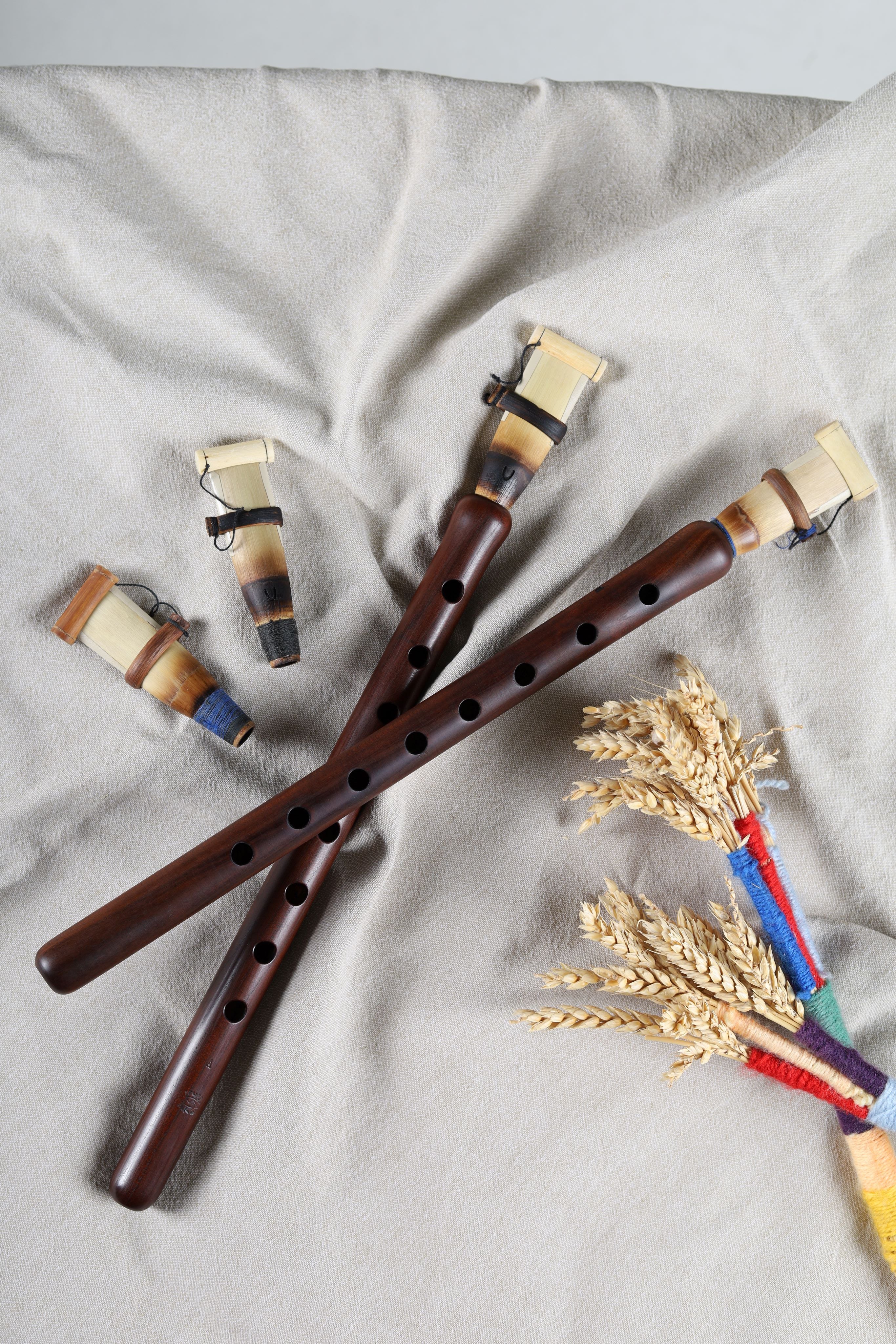Introduction
You own a Duduk and wish to deepen your practice by relying on sheet music rather than purely intuitive listening.
This more structured approach allows you not only to progress in a rigorous and efficient manner, but also to better understand the musical logic behind each piece.
This article aims to guide you in reading sheet music for Duduk, by explaining the specificities of this instrument and the particularities of its notation.
Duduk sheet music
In practice, the majority of sheet music for Duduk is written “in C.” This means that the written note is not the note we want to hear, but the note that corresponds to a specific fingering position, regardless of the actual key of your instrument.
For example, if you play a written C on your Duduk in A, the sound produced will be a real A, and this fingering will correspond to the position (6 fingers + the thumb). If you play a written C on your Duduk in C, the sound produced will be a real C, but it will be the same fingering, and so on.
This system was implemented in the 20th century in most Duduk academies, and it remains the standard in learning today. This is how, for several generations, young musicians have read their first sheet music.
More and more educational resources, including those offered by La Maison du Duduk, take this standard into account. In a logic of standardizing teaching, it is now encouraged by many teachers and adopted by students. It has proven effective both in learning the Duduk and in teaching other wind instruments.

Duduk Tablature (written note = transposed to C) ©
This is the type of tablature that is generally given to the musician when they begin learning the Duduk. From this basis, they can use these fingerings as reference points to read and interpret sheet music.
In this example, we clearly see that the position with 6 fingers + the thumb corresponds to C, while the position with 3 fingers corresponds to F.

Dle Yaman – (written note = transposed to C) ©
On this sheet music, for example, the first written note is an F, but the actual note heard is a D, corresponding to the position (3 fingers + thumb).
This type of sheet music therefore follows the logic of the previously presented tablature. It is not only the most widespread format in Duduk practice, but also the one most recommended by teachers and specialized educational institutions.

Duduk Tablature – Written in Concert Pitch (written note = heard note)
In this case, as we can see, the tablature indicates the actual sounds heard for each hole of the instrument. Although this type of tablature is useful for understanding what real notes are produced by the Duduk, getting used to it is not recommended. It may slow down your learning of sheet music reading, which is generally written in C.
Why use sheet music?
For learning
Reading sheet music presents many advantages, even for an instrument as traditional as the Duduk.
First of all, it allows you to structure your learning: by learning to read sheet music, you facilitate your progression and can choose pieces adapted to your level, simply by observing their complexity or the key signatures, for example.
Then, this method allows you to no longer depend solely on the ear, an approach certainly intuitive but sometimes imprecise, and to rely on reliable visual markers. Once reading is mastered, it becomes a valuable tool to learn more quickly and with more precision and accuracy.
For group playing
Sheet music also facilitates ensemble playing, notably in an orchestral or collective setting. Synchronizing with other musicians is not always easy, and sheet music allows establishing a common basis. It structures the interpretation, sets the markers for each instrumentalist, and avoids misunderstandings.
Rather than relying on what "sounds good," each musician reads the part destined for them, written to integrate harmoniously into the ensemble. This saves time during rehearsal and limits musical disagreements.
Understanding transposing instruments
The Duduk, like many wind instruments, is a transposing instrument.
This means that the note written on the sheet music does not necessarily correspond to the note actually heard. In other words, the written note does not directly match the sounding pitch but rather represents a predefined finger position.
For example, if you play a C on a sheet written in the key of C Major with a Duduk tuned in A, the most common tuning, the sound produced will actually be an A.
In other words, the instrument automatically transposes the note to another key. This system is also used for instruments like the clarinet, trumpet, or saxophone. It allows the musician to maintain the same markers and fingerings, regardless of the actual tuning of the instrument.
In practice, the note read on the sheet music therefore represents a finger position more than a precise pitch.
This principle was introduced in the 20th century in most Duduk academies, and it is in this way that, until today, young musicians discover their first sheet music.
How does this concretely help the musician?
Let us take a simple example: a Duduk player who is used to playing on an instrument in A reads a C on their sheet music. They know that this fingering will produce an actual A. One day, they wish to experiment with another key, such as the Duduk in F, less common but whose timbre they appreciate. However, they do not know by heart the real notes associated with the fingerings on this new instrument in F.
Thanks to the transposing system, they can continue to read the sheet music in C and use exactly the same fingerings as on their Duduk in A.
The pitch of the notes will change, but not the intervals, and it is indeed the intervals that structure a melody. They will play an F instead of an A, but will not need to relearn all the fingerings, which greatly simplifies the transition.
This system therefore facilitates reading, learning, and versatility.
It also allows the unification of educational materials such as sheet music and makes group playing more fluid, especially for beginner or amateur musicians.

